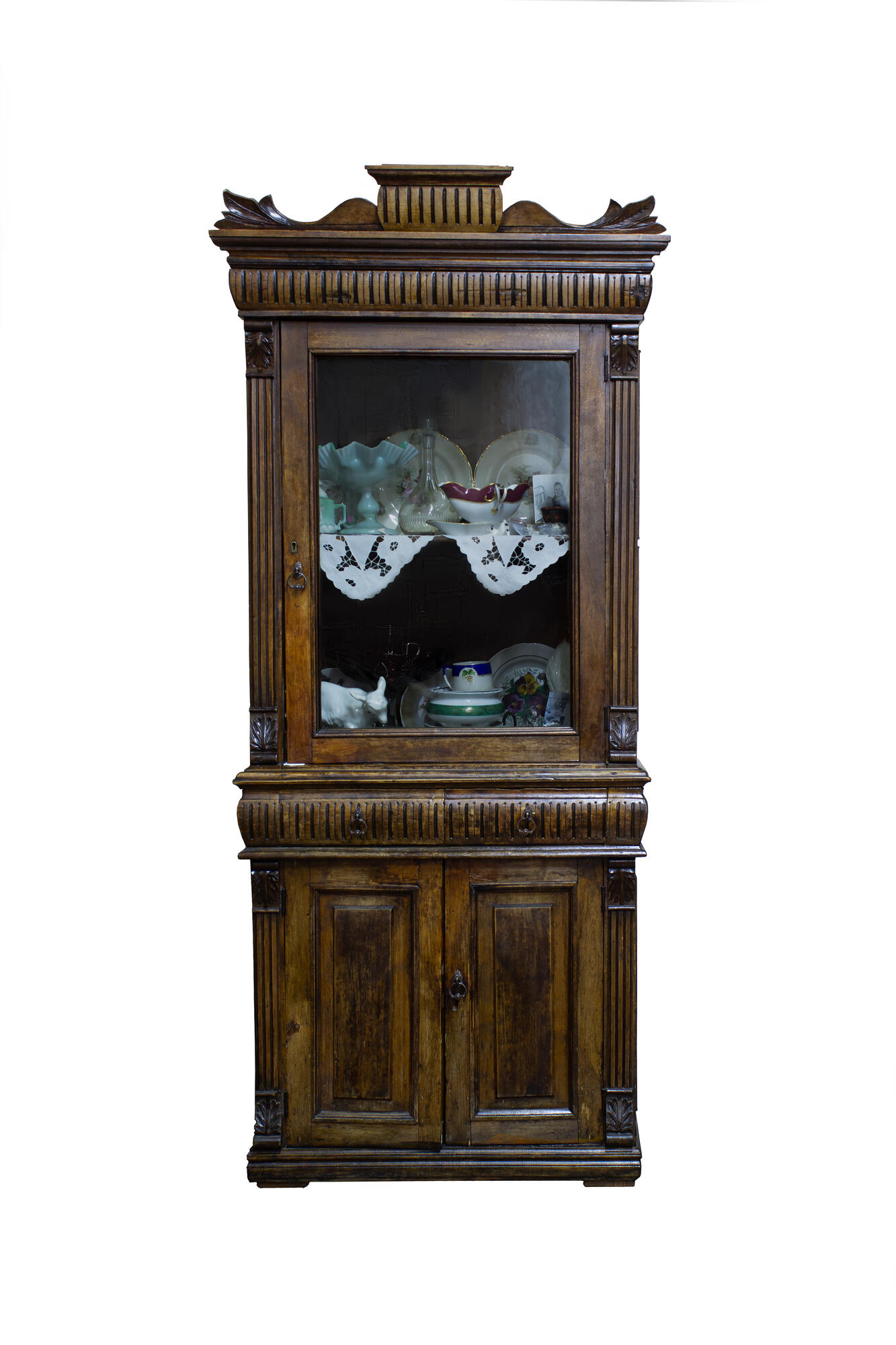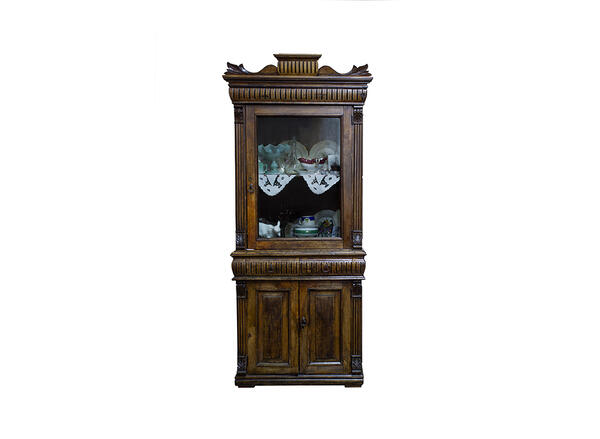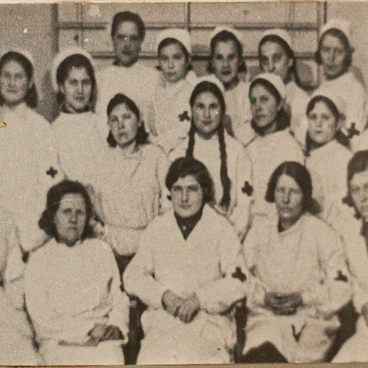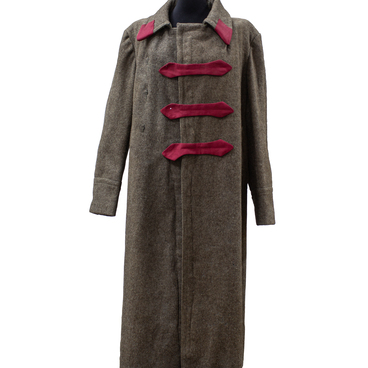Display cabinets have glazed doors and are used to store dishware. The museum houses one of such cabinets, which was made in the first half of the 20th century and was donated by a Kotovsk resident Yury Mesheryakov, who used to work at the Tambov Gunpowder Factory.
The earliest prototypes of cabinets were recesses in the walls or floor of caves. Later, after learning how to process wood, ancient people began to use hollow parts of felled trunks for storage. Over time, wood was chosen as a material for drawers, and gradually lids for them were introduced as well. The first mention of such drawers with lids, vaguely reminiscent of modern cabinets, dates back to the 3rd century BC: they were used in Ancient Egypt.
Around the 14th century, special marriage chests called cassone appeared in Italy, which were used to store the dowry. They were made of expensive wood and decorated with carvings or inlays. The Italians transformed ordinary chests into wall-mounted tables with two legs and called them “credenza”. Later, a second tier with doors was added to them. Such tables-cabinets were placed in dining and living rooms. Around the same time as the credenza, a dressoir appeared in France, which is a type of cabinet with an open-shelf second tier. As a rule, owners used it to proudly display valuable and expensive sets of tableware.
The 18th century during the Renaissance became the time when a large number of various furniture pieces were designed. During that very period, a wardrobe and a glass-door bookcase were created in England. In France, commodes, bureaus, and secretaires were produced by André-Charles Boulle, the famous court cabinetmaker to King Louis XV.
In Russia of the 17th — 18th centuries, the cabinets appeared in the houses of wealthy families. They became like display cases: as in Europe, they were used to exhibit the most expensive sets and silverware. The display cabinets were made of the finest wood, such as walnut, oak, mahogany, and others. Such pieces of furniture were usually encrusted with precious metals and decorated with carvings.
In the 1920s–1930s, the display cabinets began to be used as part of the interior to decorate living and dining rooms, and kitchens. Such cabinets, including the museum exhibit, were often made to order. Decorated cabinets made of high-quality materials were intended for rich spacious rooms, while simple and cheap furniture was mass-produced for those less wealthy.
The earliest prototypes of cabinets were recesses in the walls or floor of caves. Later, after learning how to process wood, ancient people began to use hollow parts of felled trunks for storage. Over time, wood was chosen as a material for drawers, and gradually lids for them were introduced as well. The first mention of such drawers with lids, vaguely reminiscent of modern cabinets, dates back to the 3rd century BC: they were used in Ancient Egypt.
The drawers with lids were used as storage units up to the late Middle Ages. At that time, they were called “lar” in Rus’. In the 13th century, after the Mongol invasion, they received another name — “sunduk” (chest) after the same-sounding Turkish word which literary meant “a drawer”.
Around the 14th century, special marriage chests called cassone appeared in Italy, which were used to store the dowry. They were made of expensive wood and decorated with carvings or inlays. The Italians transformed ordinary chests into wall-mounted tables with two legs and called them “credenza”. Later, a second tier with doors was added to them. Such tables-cabinets were placed in dining and living rooms. Around the same time as the credenza, a dressoir appeared in France, which is a type of cabinet with an open-shelf second tier. As a rule, owners used it to proudly display valuable and expensive sets of tableware.
The 18th century during the Renaissance became the time when a large number of various furniture pieces were designed. During that very period, a wardrobe and a glass-door bookcase were created in England. In France, commodes, bureaus, and secretaires were produced by André-Charles Boulle, the famous court cabinetmaker to King Louis XV.
In Russia of the 17th — 18th centuries, the cabinets appeared in the houses of wealthy families. They became like display cases: as in Europe, they were used to exhibit the most expensive sets and silverware. The display cabinets were made of the finest wood, such as walnut, oak, mahogany, and others. Such pieces of furniture were usually encrusted with precious metals and decorated with carvings.
In the 1920s–1930s, the display cabinets began to be used as part of the interior to decorate living and dining rooms, and kitchens. Such cabinets, including the museum exhibit, were often made to order. Decorated cabinets made of high-quality materials were intended for rich spacious rooms, while simple and cheap furniture was mass-produced for those less wealthy.



